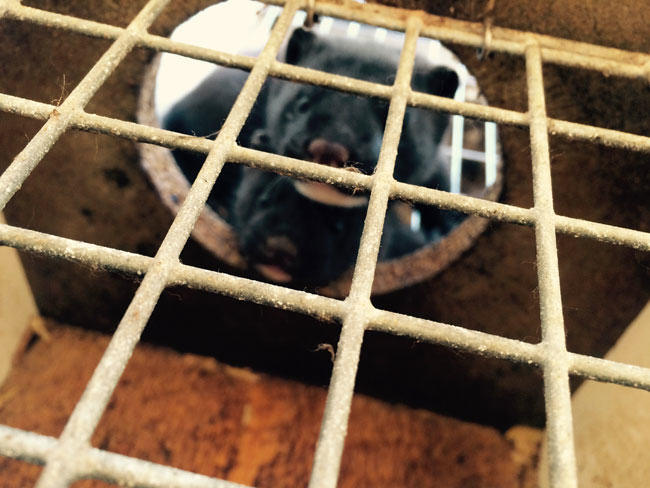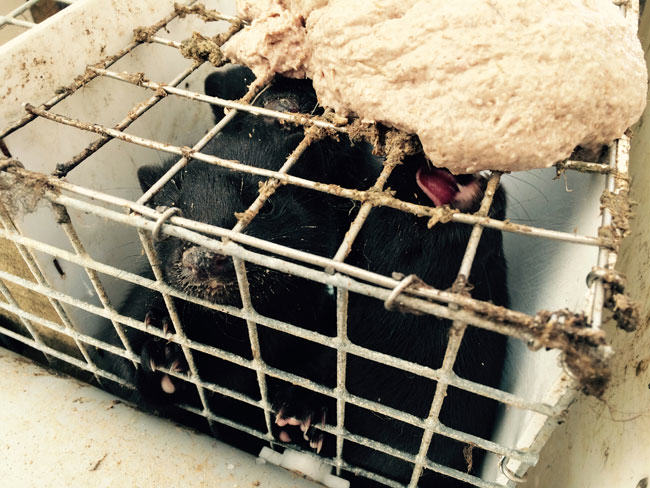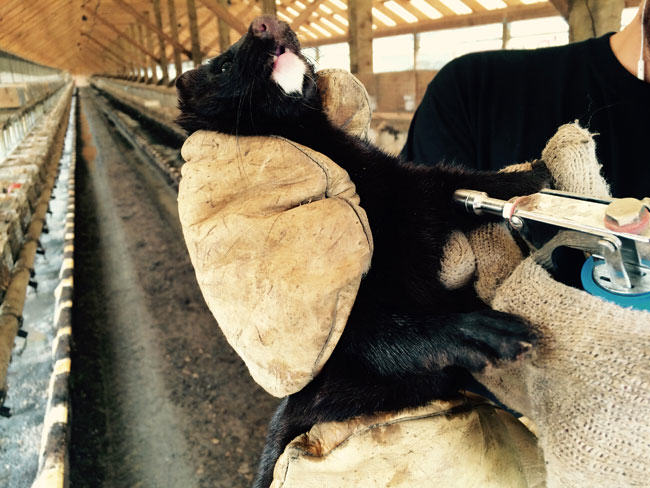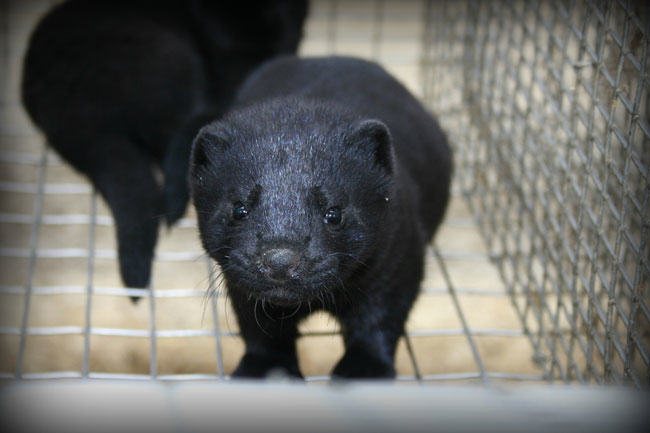
Have you ever visited a mink farm? Would you like to know more about how farmed mink are raised and cared for? Senior Truth About Fur writer Alan Herscovici asked “Les”, a third-generation Nova Scotia mink farmer, to give us a personal tour and explain the work he does during a typical year.
In Part 1: Breeding, Les explained how the mink production cycle begins early each spring. In Part 2: Whelping and Weaning, we got an insider’s view of life on the farm through one of the busiest periods, from April to June. This time, we find out how young mink are cared for through the summer.
Truth About Fur (TaF): When we last spoke, you explained all the work involved in preparing and caring for the newly born mink kits. What happens next?
“Les” (Nova Scotia mink farmer): Most of our kits were born towards the end of April or beginning of May. At about one month old they start licking at the fresh feed we put onto the wire mesh of their pen, and a few weeks after that they are usually fully weaned. On our farm we install the nipples of the drinking water distribution system quite close to the nest box opening, to encourage the kits to explore the larger pen and become more independent.

TaF: Is that when you start breaking down the litters into smaller groups?
Les: Exactly. Around mid-June, on our farm, we start moving female kits into their own pens, in groups of four. If there are more than four females in a litter – say, six – we will take two female kits from another large litter to make two pens of four each.
TaF: So the kits are about six-weeks old when they’re separated from their mothers?
Les: On average. You are watching carefully to see when the kits can fend for themselves. If you move them when they’re too small, they may have trouble reaching the water nipples and become dehydrated. If you leave them together too long, they can quarrel and bite at each other to establish dominance.
TaF: What about the male kits?
Les: Some that we select for breeding next season are moved into their own pens in another barn. Most male kits, however, we usually leave, in pairs, with their mothers. Even when fully grown, the males seem to remain calm together with their mothers. And there is research from Denmark that shows they grow bigger and healthier that way.
TaF: So you are already selecting mink for breeding or harvesting at this stage?
Les: It’s a first selection. We do the same when we divide the female kits into groups of four: we are watching for the best fur colour and quality, size, vigour, and the ones from the largest litters. These are moved into a separate barn for breeding next season.

But the female kits don’t remain in fours for long. We leave the pens across the aisle empty, so we can divide each group of four into pairs a few weeks later. Some farms settle their kits into pairs directly. But we find that doing this in two steps – fours and then pairs – helps the kits to adapt with less stress. And because we have developed movable nest boxes (see Part 1), we minimise the need to catch or handle the young mink during the extra move.
During the move from fours to pairs we also vaccinate the young mink. In Canada a 4-Way vaccine is used, protecting against distemper, pseudomonas, enteritis and botulism. We try to get our mink settled into pairs and vaccinated by the first week of July, before the weather gets too hot.
TaF: What happens next?
Les: Through the summer, the mink eat and grow. We feed them at least twice a day, sometimes more. If we see that all the feed on the wire mesh of their pen has been eaten – or if the kits seem overly active – we increase their ration. Within a month, our feed order has doubled!

Traditionally, mink farmers had to source, store and mix their own feed every day – and many still do that. We are lucky because we receive our feed every morning, direct from a central kitchen that services a number of farms in the region. They have a vet on staff and professional nutritionists to ensure that the mink receive the right proportions of fat and protein and other nutrients for each stage of their development.
After the rush of whelping and weaning, and then separating the mink into pairs and vaccinating, the summer is also a quieter time for the mink farmer. We keep the mink fed and clean, of course, but we finally have more time to catch up on maintenance and paperwork … and for some relaxation.
If you are lucky enough to have good people to help, there may even be some time for a vacation with the family. Which is just as well, because things will get busy again soon enough!
***
SEE ALSO: A YEAR ON A MINK FARM. PART 1: BREEDING, PART 2: WHELPING AND WEANING, and PART 4: FUR TIME










